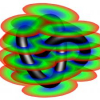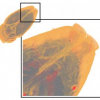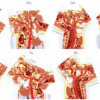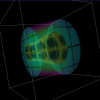129
click to vote
VIS
2003
IEEE
16 years 1 months ago
2003
IEEE
This paper presents a signed distance transform algorithm using graphics hardware, which computes the scalar valued function of the Euclidean distance to a given manifold of co-di...
107
click to vote
VIS
2003
IEEE
16 years 1 months ago
2003
IEEE
Volume rendering is a flexible technique for visualizing dense 3D volumetric datasets. A central element of volume rendering is the conversion between data values and observable q...
106
click to vote
VIS
2003
IEEE
16 years 1 months ago
2003
IEEE
Traditional volume visualization techniques may provide incomplete clinical information needed for many applications in medical visualization. Especially in the area of vascular v...
VIS
2003
IEEE
16 years 1 months ago
2003
IEEE
We present a method to represent unstructured scalar fields at multiple levels of detail. Using a parallelizable classification algorithm to build a cluster hierarchy, we generate...
138
Voted
VIS
2003
IEEE
16 years 1 months ago
2003
IEEE
In this paper, we present a space efficient algorithm for speeding up isosurface extraction. Even though there exist algorithms that can achieve optimal search performance to iden...
119
click to vote
VIS
2004
IEEE
16 years 1 months ago
2004
IEEE
Computational simulation of time-varying physical processes is of fundamental importance for many scientific and engineering applications. Most frequently, time-varying simulation...
112
Voted
VIS
2004
IEEE
16 years 1 months ago
2004
IEEE
We present a fast, topology-preserving approach for isosurface simplification. The underlying concept behind our approach is to preserve the disconnected surface components in cel...
108
Voted
VIS
2004
IEEE
16 years 1 months ago
2004
IEEE
We present a novel approach for interactive view-dependent rendering of massive models. Our algorithm combines view-dependent simplification, occlusion culling, and out-of-core re...
145
Voted
VIS
2004
IEEE
16 years 1 months ago
2004
IEEE
Traditional flow volumes construct an explicit geometrical or parametrical representation from the vector field. The geometry is updated interactively and then rendered using an u...





